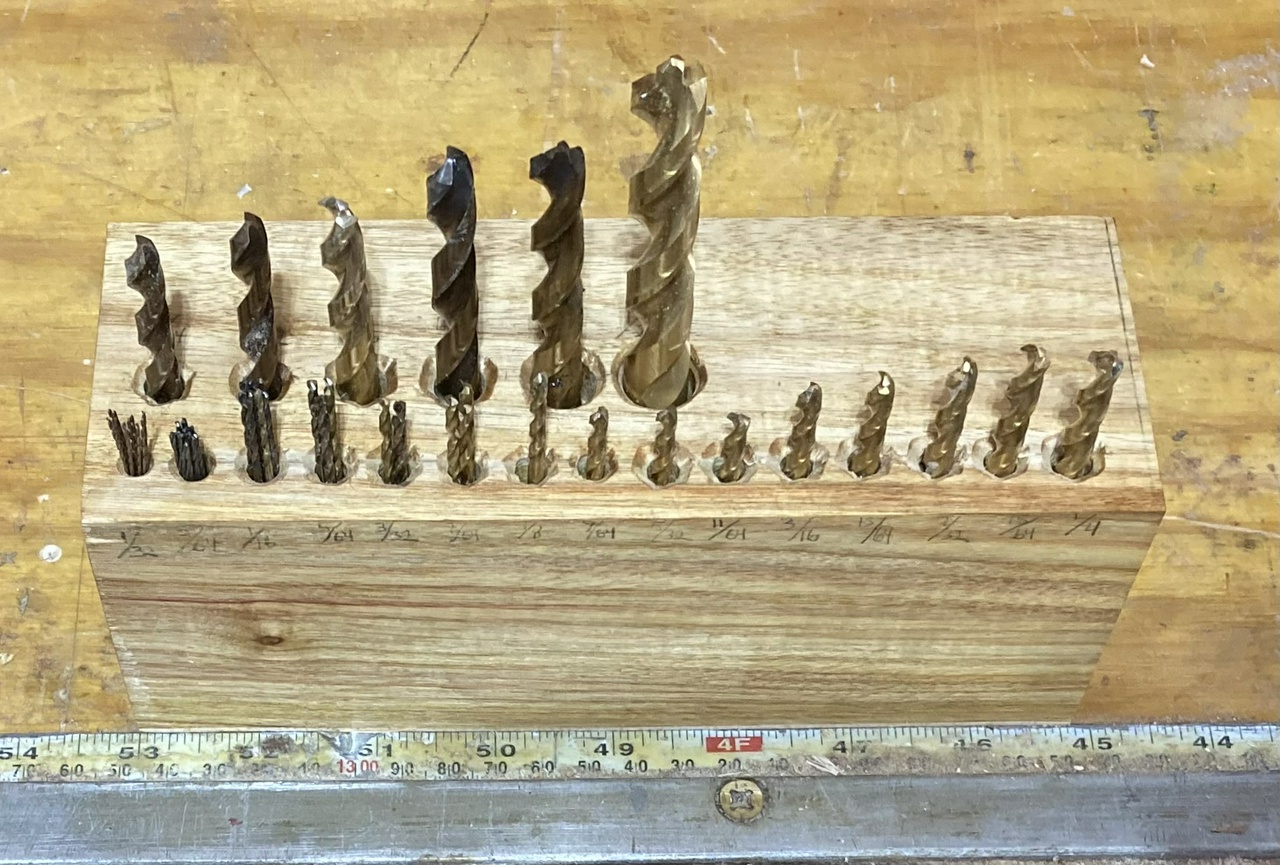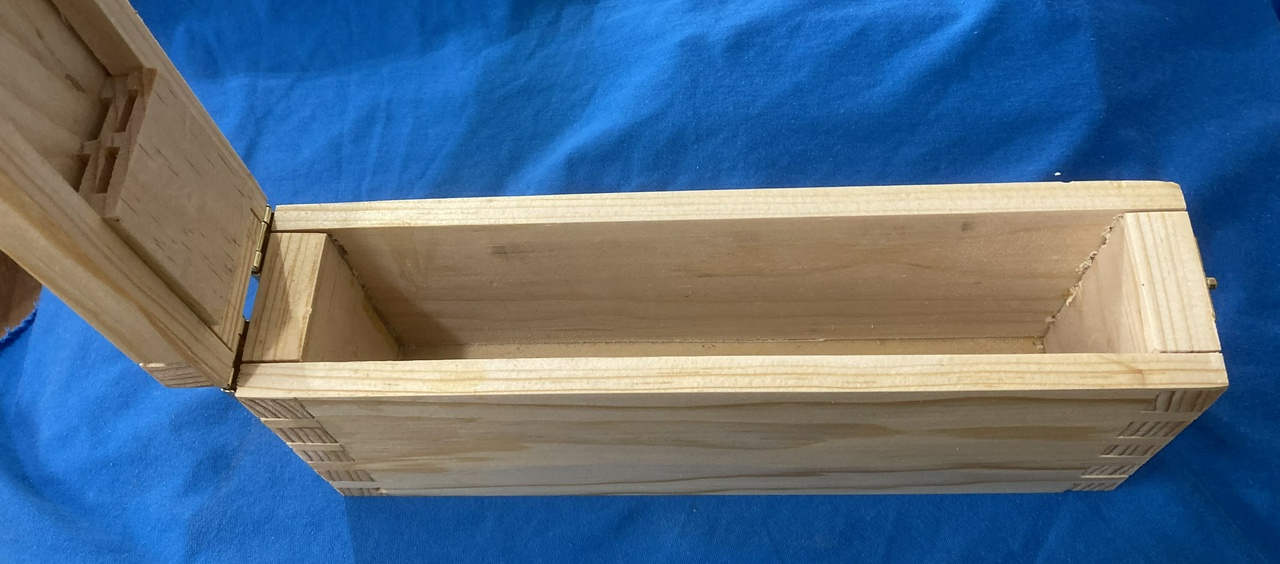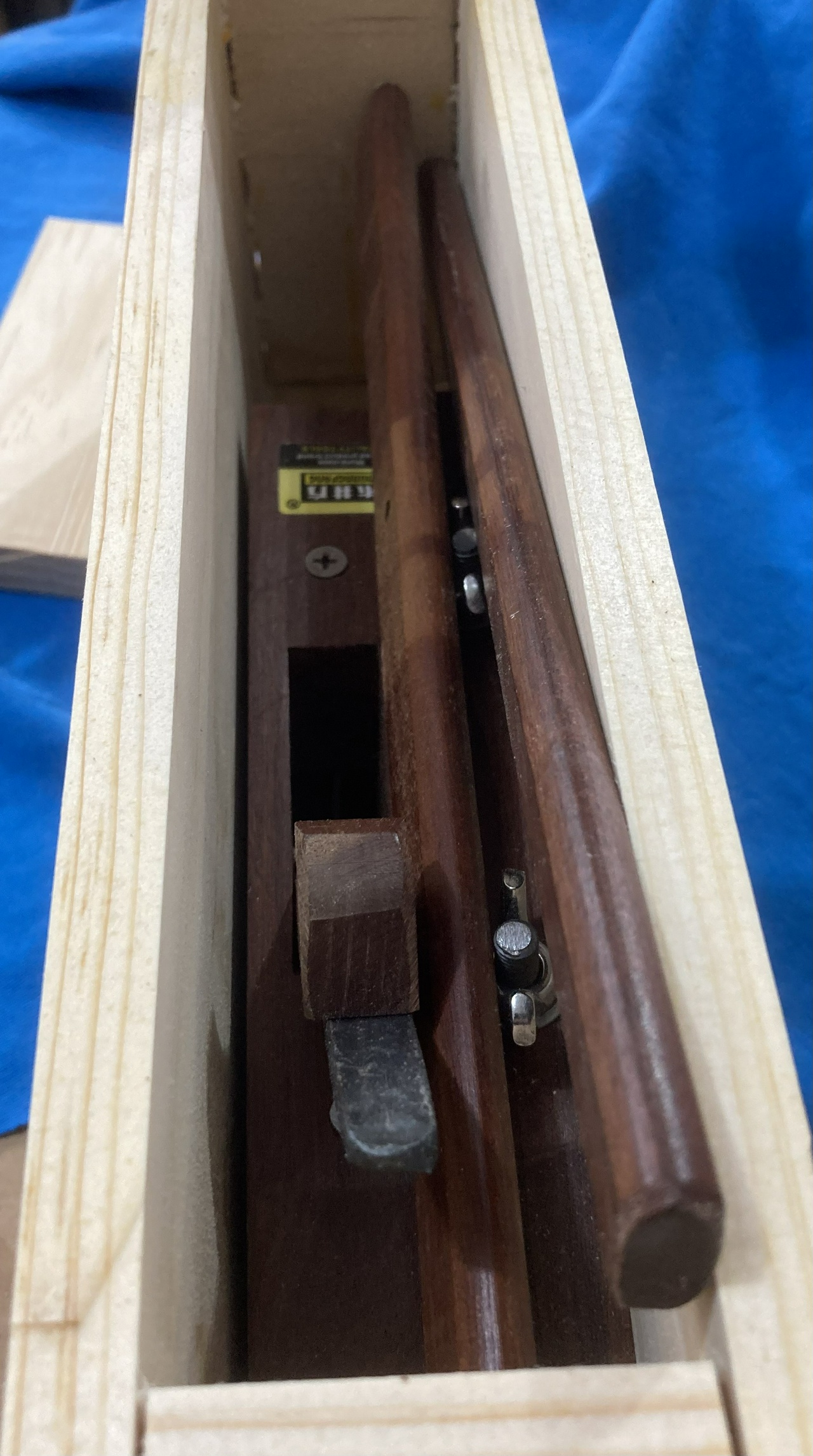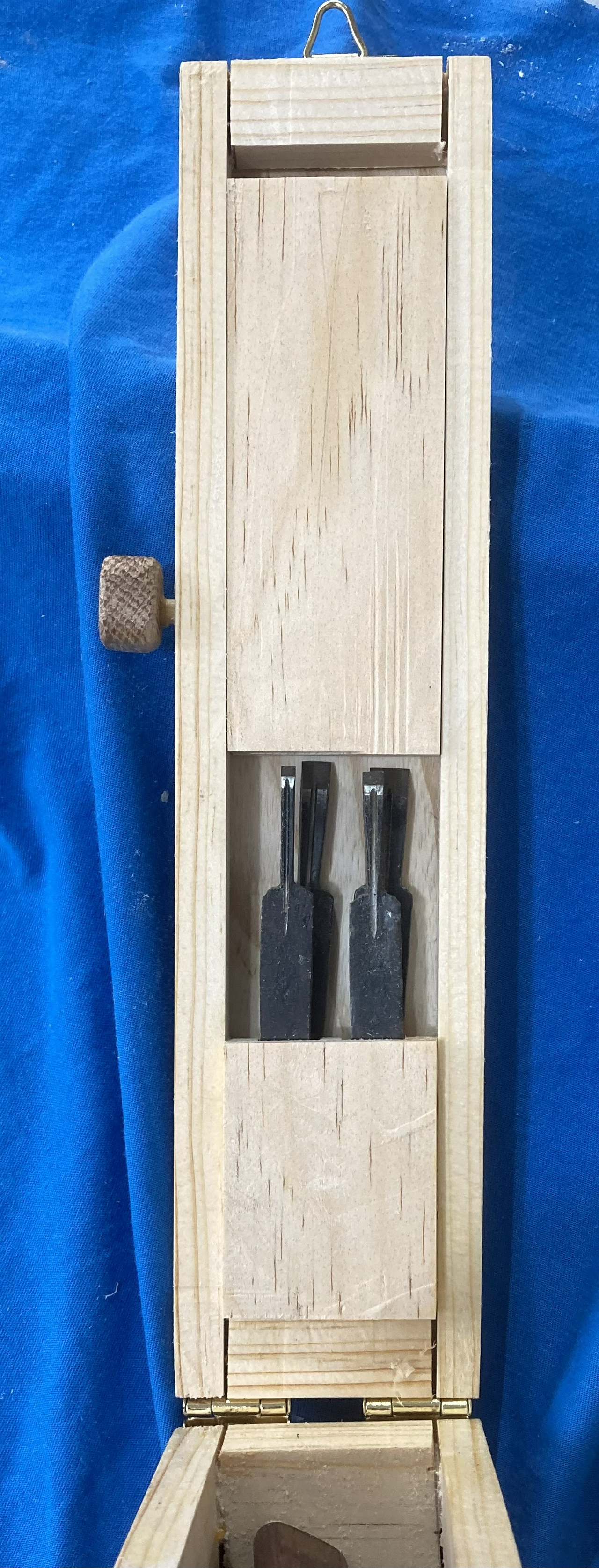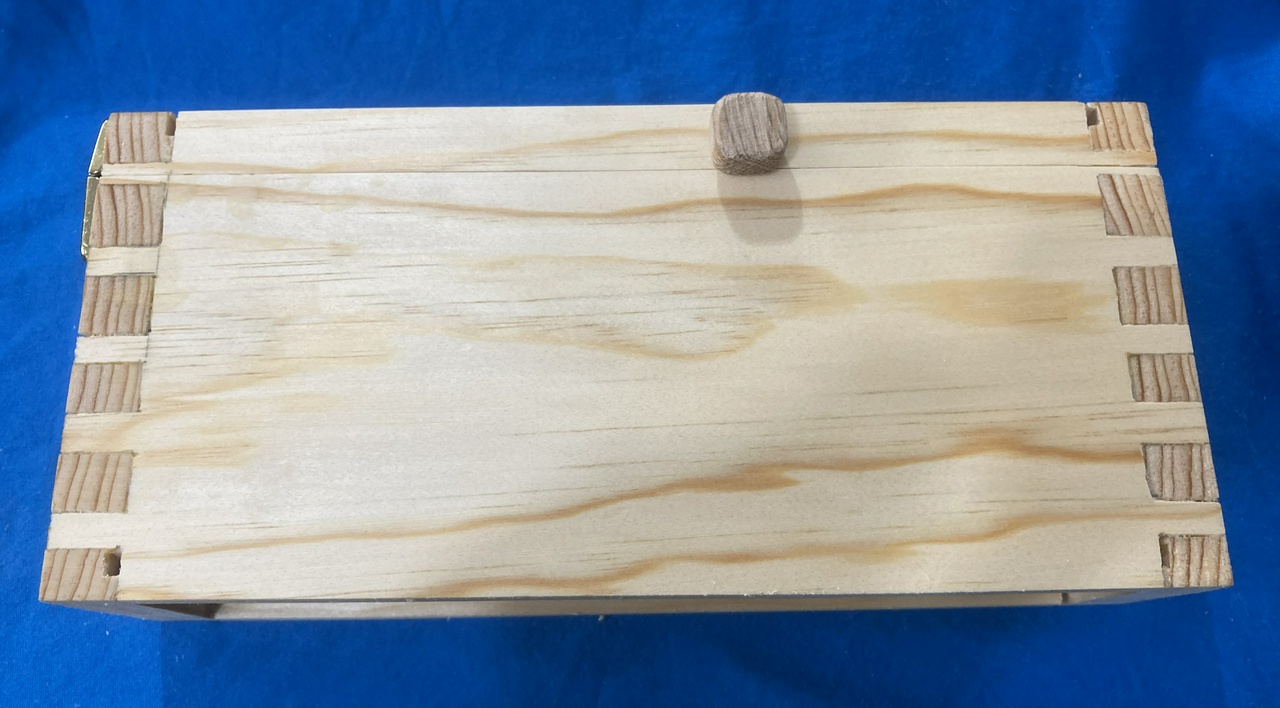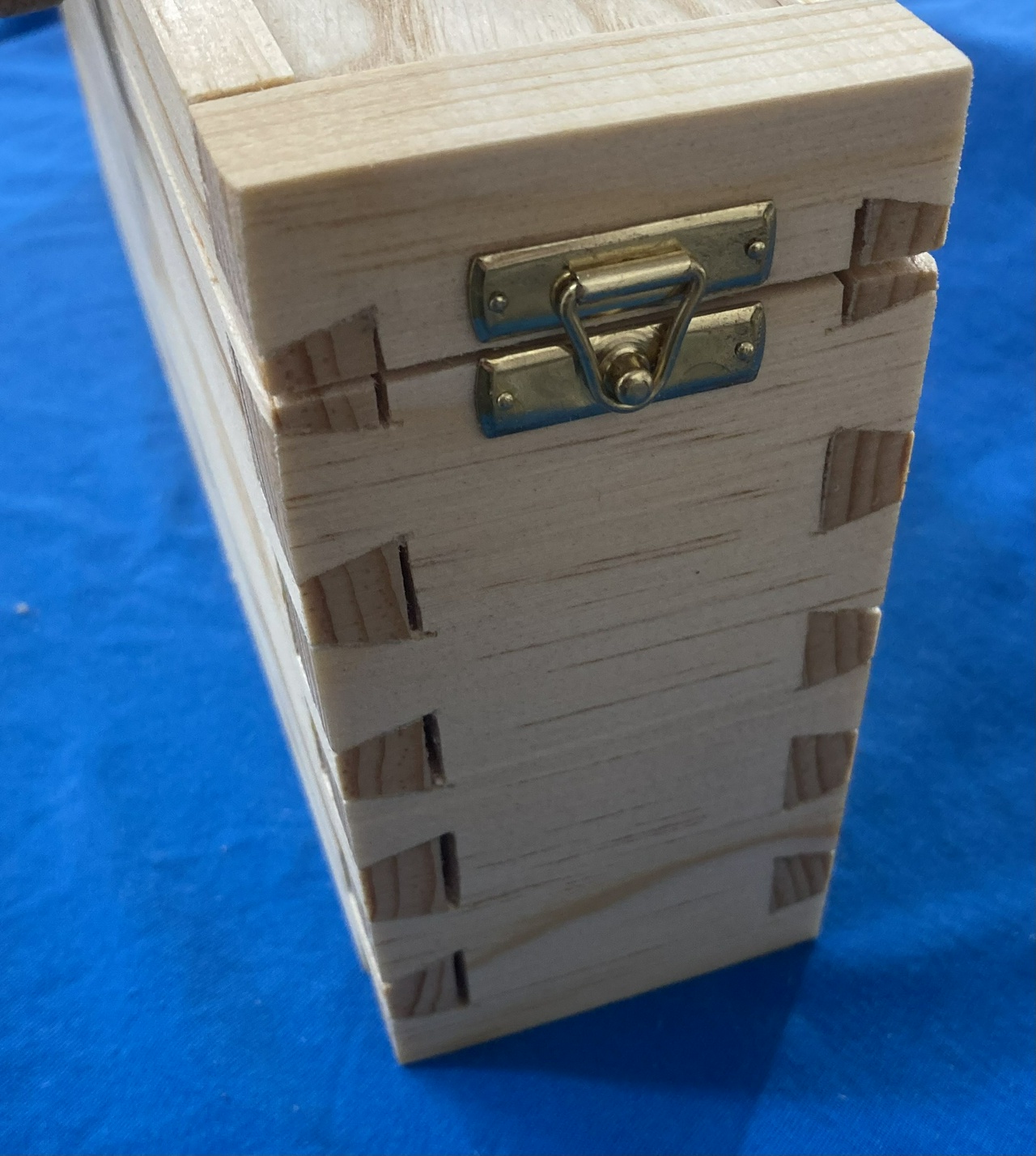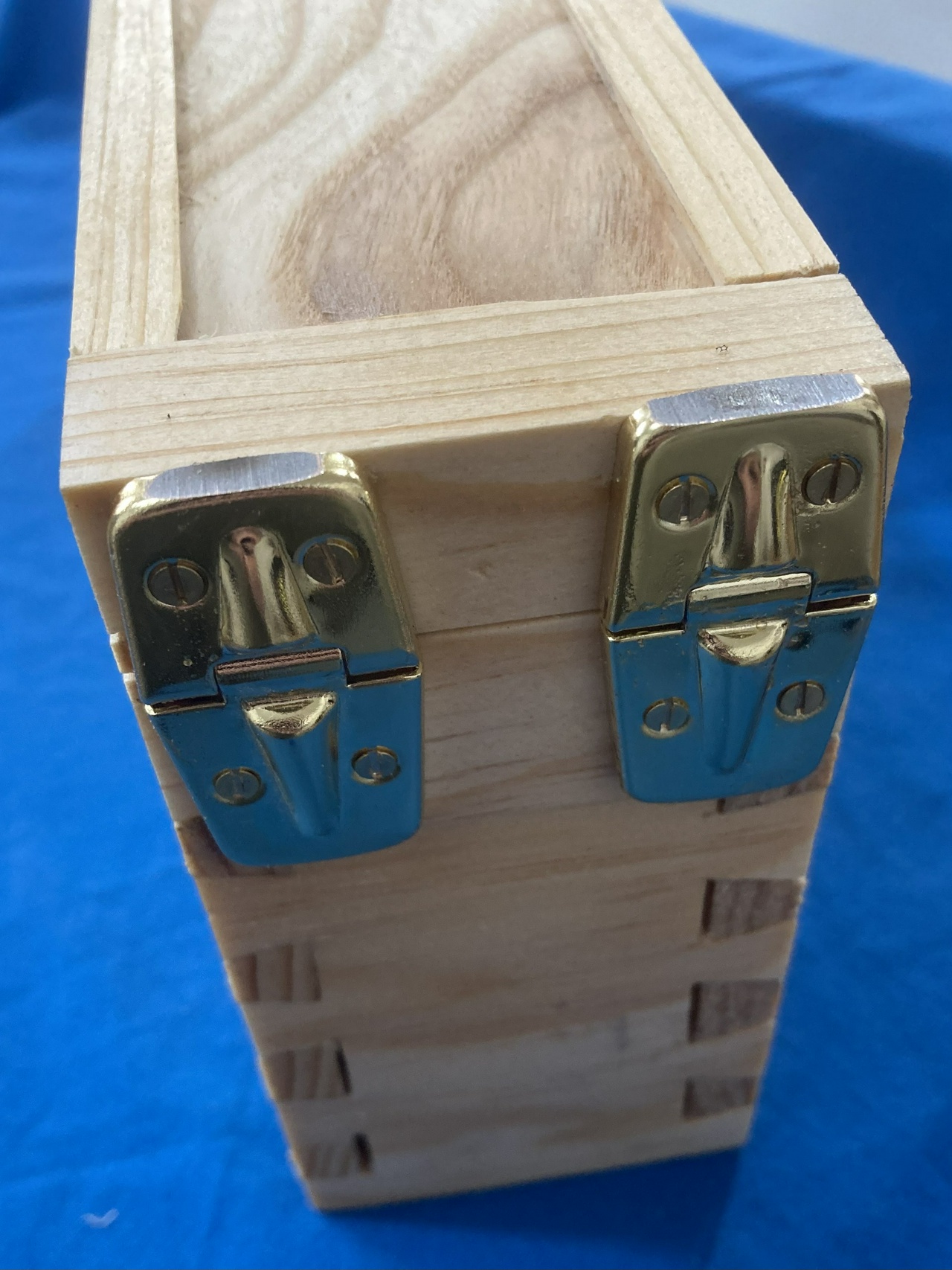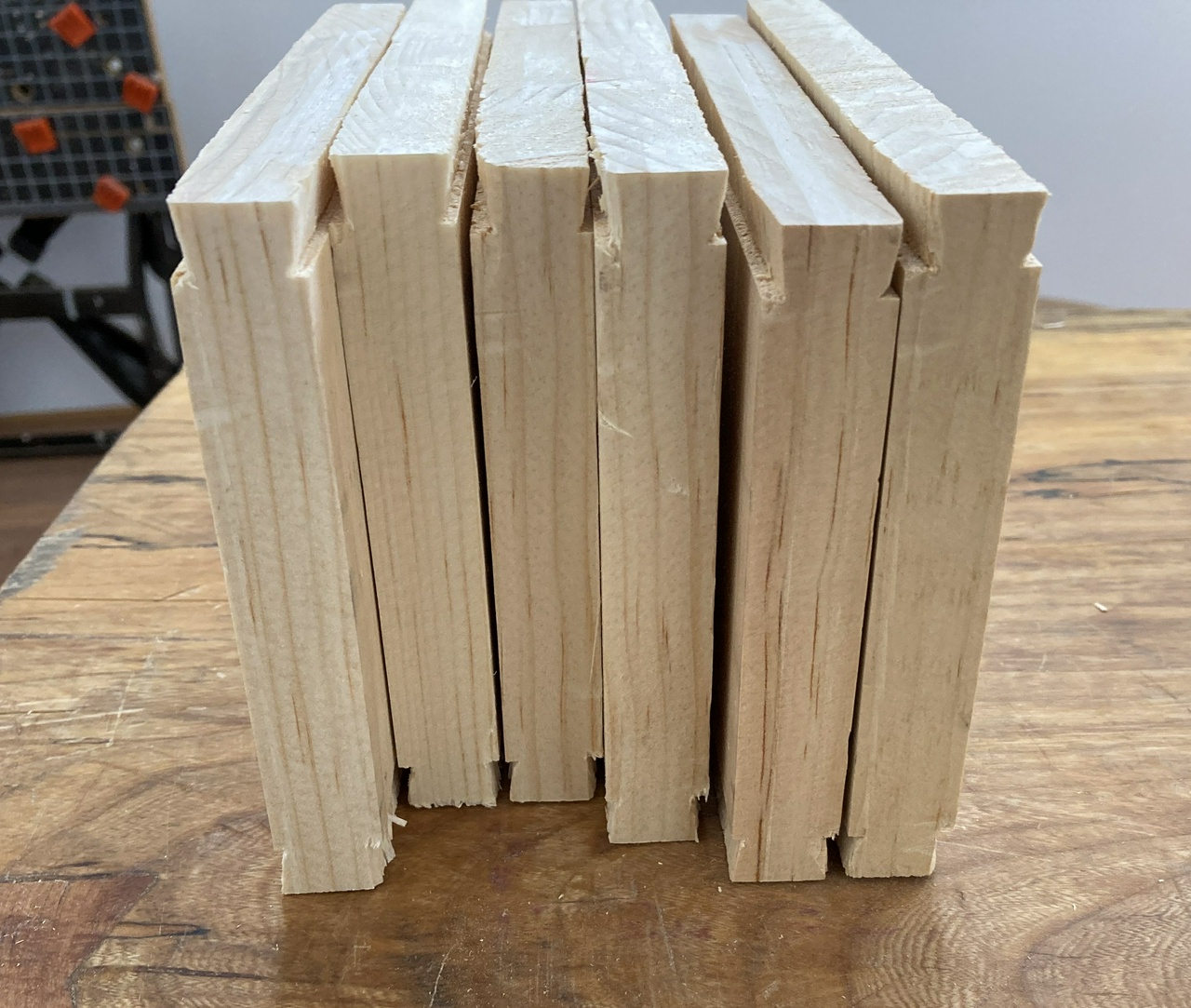File Till
I’ve been needing a single place to store my files, rasps, and floats for a while now. They were stored in two older tills, one of which had been repurposed from a saw till, and another which used to be something else that I don’t remember. Plus I had a number of files laying loose on various flat surfaces around the shop.

I started by building three racks to hold the files of various lengths. The largest holds 12 files, the middle holds 15, and the shortest rack can hold 20 files, though only the shortest in length will fit.
The racks are made of ⅜ inch thick oak, either 1 or 2 inches wide. Each rack has a bottom piece with indentations drilled in it, and a cross piece with magnets embedded to hold the files in place. They all pivot on the dowels that mount them (though this isn’t an especially useful feature) so they can be tipped forward or backward to access the files without knocking the ones in the rows in front. The racks were treated with iron acetate to ebonite them, though the solution was a couple weeks old, which is, I suspect, why I got a dark brown rather than a black finish.

The carcasse is built of ¾ inch thick pine, and dovetailed together, with the shelf above the drawer resting in a pair of ¼ inch deep dadoes. The drawer is also dovetailed, with half-blind dovetails holding the drawer front in place. This is the first time I’ve built half-blind dovetails, so it was good practice. The drawer-front is also carved with a design I made up over a few days of carving.

The pine is all finished with a coat of kakishibu. It’ll get a few coats of tung oil once it has had a little time to darken, unless I decide it needs a second coat of kakishibu first.
The drawer hold spare file handles, file cards, and needle files. A couple weeks of construction, the added carving on the front of the till makes it feel a little special and I also got to practice barrel and bead moulding which came out nice.
#woodworking #project #woodCarving #shopFurniture
Discuss... Reply to this in the fediverse: @davepolaschek@writing.exchange










